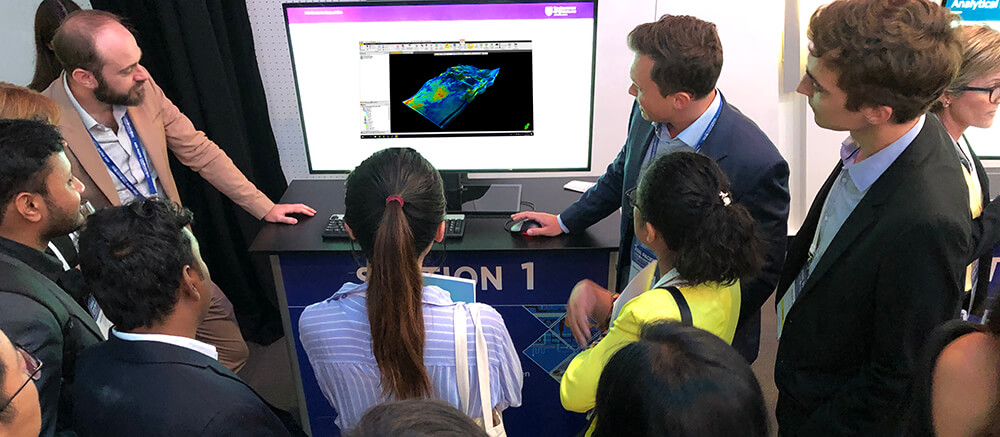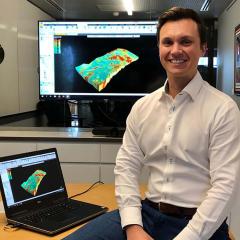Next generation modelling: UQ develops new plug-in for Petrel

Click here to see how you can apply to access a free trial of the new UQ Copula Plug-in
UQ Centre for Natural Gas members are the first to be able to access a clever new tool aimed at delivering more realistic estimates for resource models.
Researchers at the UQ Centre for Natural Gas have developed a novel plug-in for Schlumberger’s Petrel software. The geostatistical modelling plug-in is showing real promise in contributing to more cost-effective resource planning.
The new technology addresses an age-old issue for the gas industry: there’s a huge amount of data being collected and used in models, but there is not enough data to create a good spatial model. We still need processes to estimate values for points between locations where we have collected actual data. The effectiveness of models is limited by how well these estimation processes represent the actual conditions at these intermediate sites.
Current models use linear relationships between variables, however we know that this does not reflect the level of variation in the subsurface, particular in areas such as the Surat Basin.
The new plug-in is based on innovative new “research code”, which is able to connect extreme values in static models. This allows it to better differentiate and represent areas of high and low permeability, and identify the preferred flow pathways between areas. This is critical to our understanding of the rate and volume of subsurface gas and water flows.
The plug-in’s complex code is based on copulas, a statistical technique used to describe the spatial dependence between random variables. UQ’s researchers developed a sequential spatial simulation algorithm based on ‘spatial’ copulas, which can be used to model physical and chemical properties of rocks and rock fluids, to develop an understanding of where hydrocarbons and aquifers occur in the subsurface.
This is particularly important information for highly heterogeneous reservoirs, because you can start to get a better idea of key productivity factors, such as where the high permeability ‘pathways’ are, and where low permeability rocks act as flow barriers.
After successful development of the base code in the first phase of the project, the second phase of the project has been focussed on creating a tool to make the functionality broadly available to industry professionals and a range of other potential users, including academics and government.
While the initial code was designed to be platform independent, to maximise access to it by a broad range of users, it has now been tailored into a discrete plug-in for the widely used Petrel modelling software. Operators can use the automated processes alone, or can use their understanding of local conditions to adjust the way the copula interacts with the data and compare this to outputs from the automated process.
The final step in the project is to make the plug-in available for sale to all Petrel users and negotiations to achieve this are underway.
Centre members don’t need to wait. They can access a free trial of the plug-in now, by contacting the lead researcher of the project, Sebastian Hoerning s.hoerning@uq.edu.au




